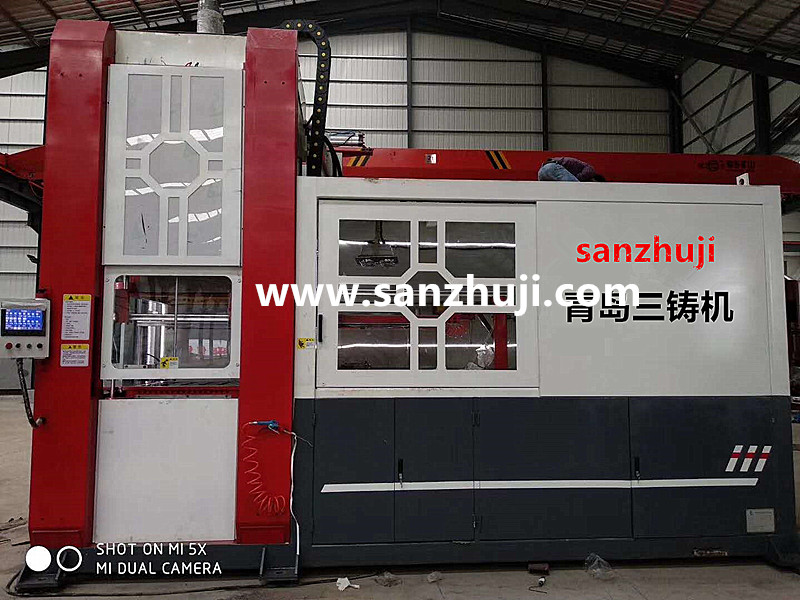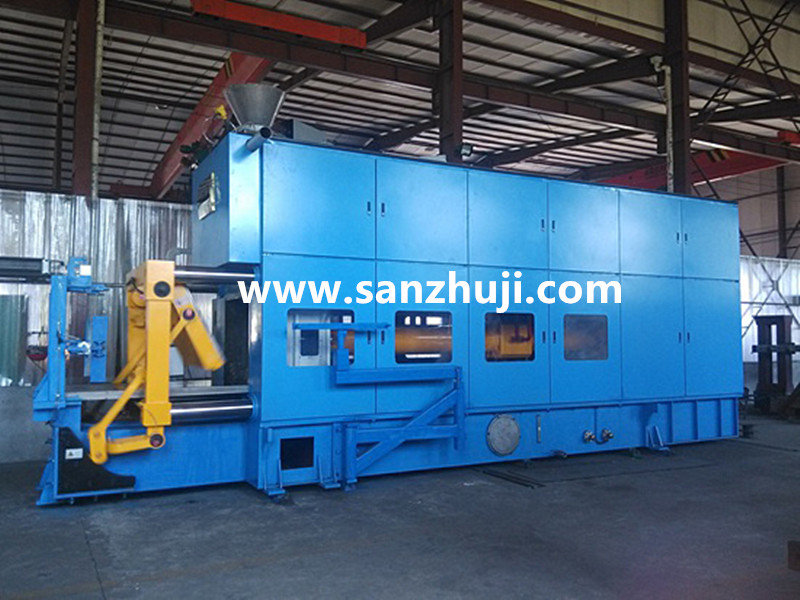5. Advantages and disadvantages of CO2-organic ester composite hardened sodium silicate sand process
In recent years, the CO2-organic ester composite hardened sodium silicate sand process has a trend of expanding applications. The process is as follows: add a certain amount of organic ester during sand mixing (usually half of the normal required amount or 4~6% of the weight of water glass); after the modeling is completed, blow CO2 to harden to the demolding strength (compression resistance is generally required The strength is about 0.5MPa); after demolding, the organic ester continues to harden, and the strength of the molding sand increases rapidly; after the CO2 is blown and placed for 3~6h, the sand mold can be combined and poured.
The hardening mechanism is:
When the water glass sand blows CO2, under the action of the gas pressure difference and the concentration difference, the CO2 gas will try to flow in all directions of the molding sand. After the CO2 gas contacts the water glass, it immediately reacts with it to form a gel. Due to the diffusion effect, the reaction is always from the outside to the inside, and the outer layer first forms a gel film, which prevents the CO2 gas and water glass from continuing to react. Therefore, in a short time, no matter what method is used to control CO2 gas, it is impossible to make it react with all water glass. According to analysis, when the molding sand reaches the best blowing strength, the water glass reacting with CO2 gas is about 65%. This means that the water glass does not fully exert its bonding effect, and at least 35% of the water glass does not react. The organic ester hardener can form a uniform mixture with the binder, and can give full play to the bonding effect of the binder. All parts of the core sand build up strength at the same speed.
Increasing the amount of water glass added will increase the final strength of the sand mold, but its residual strength will also increase, making it difficult to clean sand. When the amount of water glass added is too small, the final strength is too small, which cannot meet the requirements for use. In actual production, the amount of water glass added is generally controlled at about 4%.
When using organic ester alone to harden, the general amount of organic ester added is 8-15% of the amount of water glass. When using composite hardening, it is estimated that about half of the water glass has hardened when CO2 is blown, and about half of the water glass has not hardened yet. Therefore, it is more appropriate that the amount of organic esters accounted for 4~6% of the amount of water glass.
The composite hardening method can give full play to the dual advantages of CO2 hardening and organic ester hardening, and can fully exert the bonding effect of water glass to achieve fast hardening speed, early mold release, high strength, good collapsibility, and low cost. Comprehensive effect.
However, the CO2-organic ester composite hardening process needs to add 0.5 to 1% more water glass than the simple organic ester hardening method, which will increase the difficulty of regenerating the used water glass sand.
6. Measures to avoid sand sticking when using sodium silicate sand technology to produce iron castings
When the sand mold (core) made of sodium silicate sand is used for pouring iron castings, serious sticky sand is often produced, which limits its application in cast iron production.
The Na2O, SiO2 in the sodium silicate sand and the iron oxide produced by the liquid metal during pouring form low-melting silicate. As mentioned earlier, if this compound contains more fusible amorphous glass, the bonding force between this layer of glass and the surface of the casting is very small, and the shrinkage coefficient is different from that of the metal. Large stress is easy to remove from the surface of the casting without sand sticking. If the compound formed on the surface of the casting has a high content of SiO2 and a low content of FeO, MnO, etc., its solidified structure basically has a crystal structure, which will be firmly combined with the casting, resulting in sticky sand.
When the sodium silicate sand is used to produce iron castings, due to the low pouring temperature and high carbon content of the iron castings, iron and manganese are not easily oxidized, and the resulting sticky sand layer has a crystalline structure, and it is difficult to establish a suitable layer between the iron castings and the sticky sand layer. The thickness of the iron oxide layer is different from the resin sand between the casting and the sticky sand layer, which can produce a bright carbon film through resin pyrolysis when producing iron castings, so the sticky sand layer is not easy to remove.
In order to prevent the production of soda water glass sand from the production of iron castings, suitable coatings can be used. For water-based paint, the surface needs to be dried after painting, so alcohol-based quick-drying paint is best.
In general, iron castings can also add an appropriate amount of coal powder (such as 3% to 6%) (mass fraction) to the sodium silicate sand, so that a bright carbon film can be produced between the casting and the sand layer through the pyrolysis of the coal powder.
7. Sodium silicate sand can be regarded as environmentally friendly molding sand without waste sand discharge
Water glass is colorless, odorless, and non-toxic. It will not cause serious problems if it touches the skin and clothes and rinses with water, but it must avoid splashing into the eyes. Water glass has no irritating or harmful gases released during sand mixing, modeling, hardening and pouring, and there is no black and acid pollution. However, if the process is improper and too much sodium silicate is added, the collapsibility of the sodium silicate sand will not be good, and dust will fly during sand cleaning, which will also cause pollution. At the same time, it is difficult to regenerate old sand, and the discharge of waste sand causes alkaline pollution to the environment.
If these two problems can be overcome, sodium silicate sand can become environmentally friendly molding sand with basically no waste sand discharge.
The fundamental measure to solve these two problems is to reduce the amount of water glass added to below 2%, which can basically shake off the sand. When the amount of water glass added is reduced, the residual Na2O in the old sand is also reduced. Using a relatively simple dry regeneration method, it is possible to maintain the residual Na2O in the circulating sand below 0.25%. This reclaimed sand can meet the application requirements of single molding sand for small and medium steel castings. At this time, even if the old sodium silicate sand does not use the expensive and complicated wet method to regenerate, but uses the relatively simple and cheap dry method to regenerate, it can be fully recycled, basically no waste sand is discharged, and the ratio of sand to iron It can be reduced to less than 1:1.
8. Measures for effective regeneration of sodium silicate sand
If the residual Na2O in the old sodium silicate sand is too high, after adding the sodium silicate to the sand, the molding sand will not have enough usable time, and too much Na2O accumulation will deteriorate the refractoriness of the quartz sand. Therefore, the residual Na2O should be removed as much as possible when regenerating the used sodium silicate sand.
The above is all the explanation of sodium silicate sand casting. Qingdao Sanzhuji Equipment Manufacturing Co., Ltd. can customize the used sand recovery plan according to the characteristics of the casting sand. At the same time, it can provide sand reclamation equipment, no-bake resin sand mixer, molding machine, pneumatic conveyor, pouring machine Welcome guests to visit the factory.
Qingdao Sanzhuji Equipment Manufacturing Co., Ltd. specializes in the production of sand reclamation equipment,foundry machines,Sand casting equipment,GS high efficiency rotary mixer,no-bake resin sand mixer,Jolt squeeze molding machine/Jolt-squeezing moulding machines,Multi- Piston Moulding Machine/Hydraulic multi-piston moulding machine,foundry molding machine,flaskless moulding machine,shot blasting machine,dust collector,according to the amount of old sand recovered Carry out plan customization, and provide sand reclamation equipment installation, commissioning, and training. Welcome guests to visit the factory.








